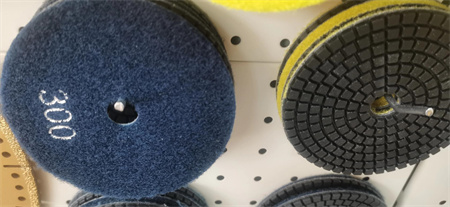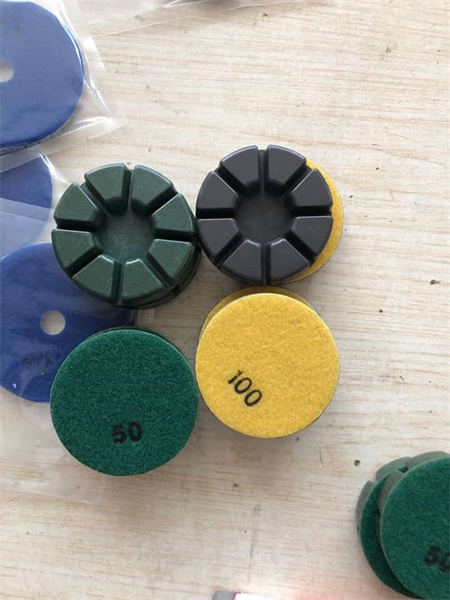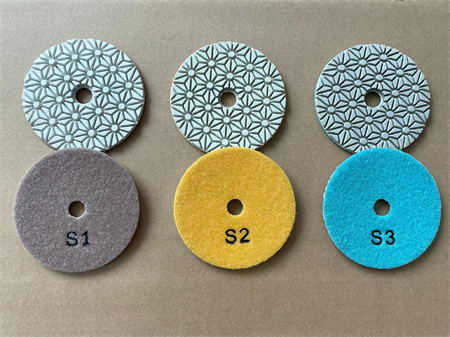The Pros and Cons of Wet vs. Dry Polishing Pads
When it comes to polishing surfaces like stone, concrete, or even glass, choosing the right type of polishing pad is critical to achieving a flawless finish. Among the most common types of pads, wet and dry polishing pads are the most widely used, each offering distinct advantages and challenges. Whether you’re working on a professional project or tackling a DIY task at home, understanding the difference between wet and dry polishing can make all the difference in your results.
Wet Polishing Pads: The Smooth Operator
Wet polishing pads are typically used with water as a coolant and lubricant. These pads are designed to prevent heat buildup during the polishing process, which is especially important when working with harder materials like granite or marble. One of the standout benefits of wet polishing is its ability to reduce friction, thereby lowering the risk of burning the surface or damaging the material.
Additionally, the water helps carry away debris, keeping the pad clean and ensuring a smoother finish. This makes wet polishing a great option when working on high-gloss surfaces or when you need to achieve a shiny, mirror-like effect. Because the water keeps the pad and surface cool, wet polishing also minimizes wear on the pad itself, extending its lifespan.
However, wet polishing isn’t without its drawbacks. The process can be messy, especially if you’re working in an indoor environment or in a space where water damage could be a concern. You’ll need to manage the water runoff effectively to avoid staining or causing damage to surrounding areas. For projects that require precision, dealing with the added wetness can sometimes be cumbersome and require extra time for cleanup.
Another potential downside is that wet polishing pads are often less versatile compared to dry pads. You need a water source and a system to manage the liquid, which can be restrictive if you’re working on the go or in spaces without easy access to water. Moreover, wet polishing pads tend to be more expensive, particularly for high-quality options designed for commercial use.

Dry polishing pads, on the other hand, are designed to operate without water, making them ideal for situations where access to water is limited or impractical. These pads are typically used for smaller projects or for polishing materials like concrete, where the surface can withstand the heat generated without water lubrication. The main advantage of dry polishing is its convenience. There’s no need to worry about managing water runoff or dealing with wet surfaces, which means you can quickly and easily move from one section of a project to another.
Dry polishing pads are also more versatile in terms of the types of materials they can handle. While they may not be as effective at reducing heat buildup on very hard stones, dry pads work well for softer surfaces and those where a high level of detail is required. In fact, many professionals prefer dry polishing pads for their ability to achieve a fine, uniform finish, especially when working on concrete or terrazzo floors.
However, dry polishing does come with its own set of challenges. Since there’s no water to cool the surface, the heat generated during polishing can cause the pad to wear down more quickly, especially when used on tougher materials. The lack of lubrication can also result in more friction, which might lead to a rougher finish or even surface damage if not used correctly. Additionally, dry polishing pads can be dustier than their wet counterparts, requiring more frequent cleaning and potentially affecting air quality.

Deciding which type of pad is right for your project ultimately depends on a variety of factors, including the material you’re working with, the environment in which you’re working, and the level of finish you’re hoping to achieve.
If you’re working with materials like granite, marble, or any other stone that is prone to heat buildup, wet polishing pads are often the better choice. The water helps control temperature, prolong the life of your pads, and provides a smoother, glossier finish. Wet polishing is also ideal for large-scale projects where managing dust and debris is a priority.

In the end, both wet and dry polishing pads have their own place in the world of surface finishing. The key is to assess the specific needs of your project and choose the tool that will give you the best results. Whether you prefer the wet method for its smooth, glossy outcomes or the dry method for its speed and ease, understanding the pros and cons of each will ensure you’re equipped to tackle any polishing challenge that comes your way.